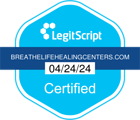Research has studied that eating disorders and disordered eating such as anorexia and bulimia are some of the most challenging and complex mental disorders currently facing our population. In comparison, people who struggle with eating disorders versus drug addiction often struggle with the same intrusive and control oriented obsessions, but a major difference is drug addicts can stop using and get better, while people with eating disorders have to learn how to have a healthy relationship with their addiction.
Bulimia is one of the more well-known forms of eating disorders, yet its prevalence continues to be on the rise. Our society has a deeply ingrained “ideal” of what the perfect physical form should look like, even though more than 75% of the American population looks nothing like it.
Social media, magazines, advertisements, movies, and even family life put a constant pressure on people to feel, look, and be different. So if you or your loved one might be struggling with an eating disorder such as Bulimia, here are some warning signs and ways to get help.
What is Bulimia
Bulimia is a real and registered mental health disorder that involves purging food after consumption in a purposeful manner. It is primarily focused on not gaining weight, shame, control, and body dysmorphia. Similarly to other addictions, bulimia often begins as experimentation, something learned by someone else, and over time it can begin to spiral out of control and become an obsession, a coping mechanism, and an addiction.
The word “purging” is not isolated to the act of vomiting, as many people believe. There are many forms of purging that people with Bulimia can utilize to keep their weight loss goal discrete, such as:
- Vomiting after meals
- Abusing weight loss supplements
- Abusing laxative medications
- Excessive fasting or exercising
A common thread throughout many people with Bulimia is a combination of fasting, bingeing, and then purging the food.
Commonalities and Statistics
According to Mirror-Mirror, a leading support tool in people who struggle with eating disorders, Bulimia can cross all genders, races, socioeconomic groups, and ages. Most people are aware that eating disorders such as anorexia and bulimia occur in adolescence and young adults at the highest rates, yet with the overwhelming pressures from our society to be fit, healthy, and a certain physical form, older adults have been experiencing symptoms of Bulimia Nervosa as well.
- People with bulimia are often average weight or even overweight
- Only one in 10 people with Bulimia receive treatment
- Around 1.5% or 4.7 million females in the United States struggle with Bulimia
- 0.5% or 1.5 million males in America have reported experiencing Bulimia
- Bulimia has been found in children as young as 6
- 30-70% of people with Bulimia also have an addictive disorder
- Self-harm is common among people with Bulimia
- Suicidal thoughts are often common among people with Bulimia
Eating disorders are difficult to diagnose, treat, and stay in recovery from for many people, as the relapse rates are very high. People who struggle with disordered eating often go to great lengths to hide their disorder from their loved ones, so it can often be difficult to identify when someone is struggling.
Signs of Bulimia
Again, people with eating disorders put extensive amounts of time and energy into nurturing and concealing their issues with food, but there are commonalities among people with Bulimia that have made it easier to identify. Some of these physical symptoms include:
- Consistent change in weight
- Broken blood vessels in the eyes
- Being preoccupied with weight
- Counting calories, sugars, salts, fat intake
- Eating alone, in secret, or not at all
- Eating excessive amounts
- Frequenting the bathroom after meals
- Acid Reflux
These are all indications that a person may be struggling around eating or forcefully purging after meals. These symptoms can be difficult to diagnose if the family is not aware or naive to the prevalence of Bulimia, but if you are beginning to be concerned about your own, or your loved ones eating habits, they are a good jumping off point to keep an eye out for.
Other than these physical displays of an eating disorder, there will often be certain behavior patterns that an individual will begin to use to hide their struggles with food. These could be:
- Wearing baggy clothes
- Avoiding social gatherings around food
- Not eating at regular mealtimes
- Hoarding food
- “Rebelling” in other areas
- Falling short in work, school, hobbies
Co-occurring Disorders
Research has shown in recent years that many people who struggle with one major mental disorder are often plagued by other types of mental disorders. Studies have been proving that more and more people with eating disorders have experienced some sort of trauma, abandonment issues, bullying, substance abuse, lack of control, physical or emotional abuse, or an unobtainable expectation of performance.
In other words, people who struggle with eating disorders often fall into this mental disorder as a result of feeling out of control in some other area of their life. Controlling their food becomes the only way a person with an eating disorder can feel in control of anything, and while they may know it is dangerous and harmful, after a certain time, they are unable to stop and it becomes the most important thought in their day to day life.
This is why it is so vital for people with Bulimia to receive professional therapeutic intervention, especially if they are struggling with another mental disorder underlying their eating disorder. Some of the most common mental disorders associated or linked to Bulimia are:
- Anxiety
- Depression
- Obsessive Compulsive Disorder
- Suicidal Thoughts
- Substance Abuse
- Post Traumatic Stress Disorder
How to Get Help for Bulimia Now
There are endless amounts of organizations, fellowships, and treatment facilities that are geared toward helping people who suffer from Bulimia and other eating disorders. Breathe Life Healing Centers, located in Los Angeles utilizes a multipronged approach to eating disorders that helps heal the underlying pain through Dialectical Behavior Therapy, Family Therapy, Support Groups, Self-Care education, and life-skills learning.
Struggles with food don’t have to go on forever, healing and recovery are possible.













